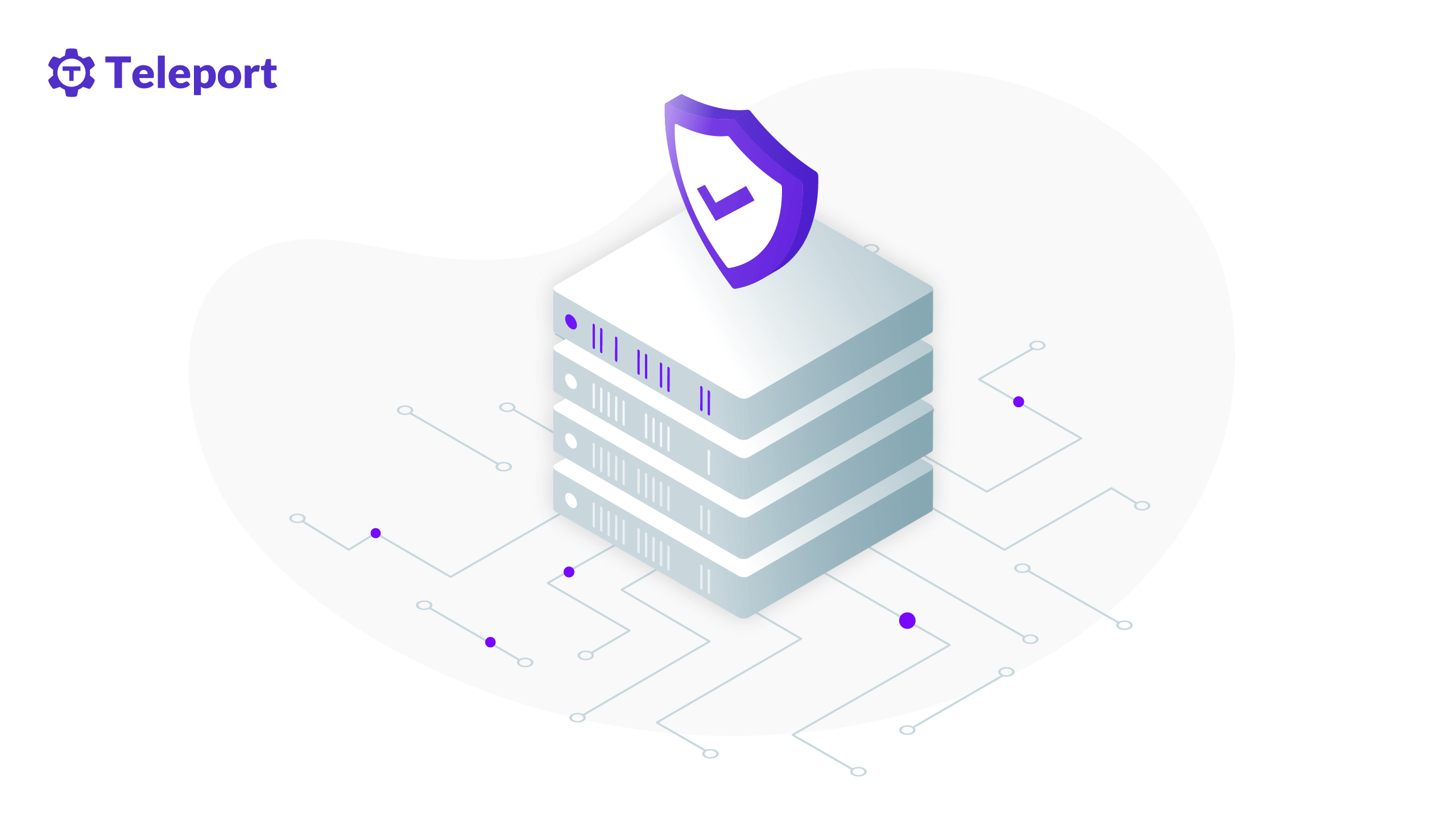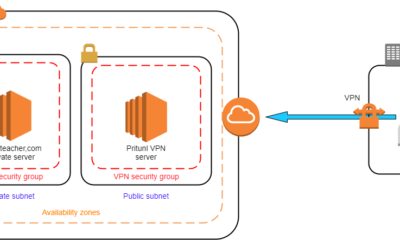Linux
How to Secure SSH Access With Port Knocking: Expert Tips
Imagine a fortress, impenetrable to outsiders, yet granting entry to those who know the secret knock. This is the concept behind port knocking—a technique that can transform your SSH access into a secure stronghold.
You value the security of your server, and you want to ensure that only the right people gain entry. But traditional methods might leave you exposed to unwanted attention. What if you could add an extra layer of protection, one that is both simple and effective?
In this guide, you’ll discover how port knocking can safeguard your SSH access. You’ll learn step-by-step how to implement this technique, enhancing your server’s security without the complexity that often comes with advanced cybersecurity measures. This isn’t just about keeping threats at bay; it’s about empowering you to take control and feel confident in your server’s safety. Your peace of mind is within reach. Dive into the article to unlock the secrets of port knocking and transform your approach to SSH security.

Credit: goteleport.com
Basics Of Ssh And Port Knocking
Enhancing SSH security can be achieved through port knocking, a method that conceals SSH ports from unauthorized access. This technique involves a sequence of network requests, unlocking SSH only when the correct sequence is completed. It adds an extra layer of security, ensuring only trusted users gain access.
Securing your SSH access is crucial for protecting your server from unauthorized access. One effective method is using port knocking. But what exactly are SSH and port knocking? Understanding the basics will set the foundation for enhancing your server’s security. ###Understanding Ssh
SSH, or Secure Shell, is a protocol used to securely access network services over an unsecured network. It encrypts the data, ensuring that your login credentials and any transmitted information remain safe from prying eyes. Imagine you’re sending a secret letter; you wouldn’t want anyone else to read it. SSH is like sealing that letter in a secure envelope. It provides a safe channel to manage devices remotely, which is why it’s so widely used. ###The Concept Of Port Knocking
Port knocking is a technique used to secure your server by hiding open ports from potential attackers. When you want to access your server, you send a series of connection attempts, or “knocks,” to specific ports in a specific sequence. This sequence acts like a secret handshake. Once the server recognizes the correct sequence, it opens the SSH port for your IP address. This method adds an extra layer of security because attackers can’t see which ports are open unless they know the sequence. ###Why Combine Ssh With Port Knocking?
Combining SSH with port knocking offers dual-layered security. SSH already encrypts data, but by using port knocking, you make your server less visible to attackers. Think of it as having both a lock and a hidden door. Even if someone has the key, they can’t enter if they can’t find the door. This makes it significantly harder for unauthorized users to gain access. ###Practical Steps To Implement Port Knocking
Implementing port knocking is simpler than it sounds. First, install a port knocking software like `knockd` on your server. Configure it with your desired sequence of ports. Ensure that your sequence is complex enough to avoid guessing but simple enough for you to remember. Test the setup from a remote location to ensure it works as expected. ###Challenges You Might Face
While port knocking adds security, it can also introduce challenges. If you forget the sequence, you might lock yourself out. It can also complicate access for legitimate users who need to know the sequence. Consider whether the added security layer is worth the potential inconvenience. Would you prefer a small hassle now or deal with a potential breach later? ###Conclusion: Enhancing Your Security
Securing SSH access with port knocking is a proactive step towards safeguarding your server. This method keeps your server’s ports invisible and adds an extra layer of protection. It’s an excellent choice for those serious about security. Are you ready to implement these steps and protect your server?
Credit: www.linuxbabe.com
Why Port Knocking Matters
In the digital age, securing access to servers is crucial. One method to enhance security is port knocking. This technique adds an extra layer of defense. It protects your server from unauthorized access. But why does port knocking matter?
Port knocking is more than just a security measure. It acts as a stealth mode for your server. By keeping ports closed, it hides entry points from prying eyes. This reduces the risk of attacks.
Hackers often scan for open ports to exploit. If they find none, your server becomes less of a target. Port knocking ensures that only verified users can access the server. This keeps data safe and secure.
Enhancing Security Layers
Multiple security layers are essential for server protection. Port knocking adds an extra layer. It works alongside firewalls and encryption. This combination makes unauthorized access difficult.
Each layer serves a unique purpose. Together, they create a robust defense system. Port knocking is a key component in this setup. It provides an initial barrier against threats.
Preserving Server Resources
Open ports can lead to resource drain. Unauthorized access attempts use server power. Port knocking helps preserve these resources. By keeping ports closed, it reduces unnecessary load.
With fewer open ports, the server can operate efficiently. This leads to better performance and stability. Port knocking contributes to resource management.
Maintaining User Privacy
Privacy is a major concern in today’s digital world. Port knocking aids in maintaining user privacy. By controlling access, it limits data exposure. Only authorized users can reach sensitive information.
This control ensures that data remains confidential. Users can trust that their information is secure. Port knocking supports this trust by enhancing privacy measures.
Setting Up Port Knocking
Securing SSH access with port knocking adds an extra layer of security. It hides your open ports from potential attackers. This process involves a sequence of network interactions. These interactions trigger the firewall to open the desired port. Setting up port knocking requires careful configuration. Let’s break it down step-by-step.
Choosing The Right Tools
To begin, select tools that support port knocking. Popular options include knockd and fwknop. These tools are widely used and well-documented. They provide robust support for setting up port knocking. Choose a tool that fits your system’s requirements. Make sure it’s compatible with your operating system.
Configuring The Firewall
Next, configure your firewall to recognize knock sequences. This involves modifying firewall rules. Use iptables or firewalld for this purpose. Ensure your firewall can handle the knock sequence. Set rules to open and close ports based on the sequence. This helps in keeping your SSH port hidden.
Defining Knock Sequence
Defining a knock sequence is crucial. It acts as a secret code for your firewall. Choose a sequence that is hard to guess. Use multiple ports for added security. Each port will be part of the sequence. The correct sequence will unlock your SSH port. Test the sequence to ensure it works as expected.
Best Practices For Port Knocking
Securing SSH access with port knocking enhances server protection by allowing access only after specific ports are “knocked” in a set sequence. This method hides your SSH port from potential attackers. Implementing port knocking can significantly reduce unauthorized access attempts, adding an extra security layer to your server.
Securing SSH access with port knocking can add an extra layer of security. Implementing best practices ensures your system remains robust and reliable. These practices help in preventing unauthorized access and maintaining system integrity. Explore these strategies to enhance your security setup.Randomizing Sequences
Random sequences make it harder for attackers to guess your port combination. Avoid predictable patterns to increase security. Change the sequence periodically to keep it unpredictable. Randomization adds an element of surprise, safeguarding your system.Using Multiple Ports
Utilize multiple ports for increased complexity. This approach requires attackers to try various combinations. More ports mean a higher level of security. It reduces the chances of unauthorized access by making it more challenging.Regularly Updating Configurations
Keep your configurations up-to-date. Regular updates help in addressing potential vulnerabilities. Ensure your port knocking setup aligns with the latest security standards. This practice maintains the effectiveness of your security measures.Troubleshooting Common Issues
Securing SSH access with port knocking offers an added layer of security. Yet, it can present challenges. Understanding how to troubleshoot common issues ensures smooth operation. Here, we explore some frequent problems and their solutions.
Dealing With Latency
Network latency can affect port knocking. It may delay or disrupt the sequence. Ensure your network speed is stable. Use reliable network tools to test it. Adjust the timeout settings in the port knocking configuration. This can help accommodate any network delays.
Handling Incorrect Sequences
Incorrect sequences often result from human error. Double-check the port sequence you input. Ensure it matches the server’s configuration. Consider using a script to automate the sequence. This minimizes the risk of manual errors.
Monitoring Access Logs
Access logs provide insights into port knocking attempts. Regularly review these logs for unauthorized attempts. Look for patterns that indicate repeated failed sequences. Use these insights to adjust your security settings. This proactive approach enhances your SSH security.

Credit: www.tecmint.com
Advanced Security Measures
Enhance SSH access security with port knocking. This method allows access only after a sequence of “knocks” on specific ports. Unauthorized users face difficulty accessing without the correct sequence.
Securing SSH access with port knocking is an effective strategy for safeguarding your server. But why stop there? Elevate your defense with advanced security measures. These enhancements not only deter unauthorized access but also give you peace of mind. Let’s explore how you can add layers of security to your SSH setup.Integrating With Multi-factor Authentication
Adding multi-factor authentication (MFA) is like putting a second lock on your door. It ensures that even if someone knows your password, they still can’t get in. Imagine the comfort of knowing your SSH access demands both a password and a code from your phone. Setting up MFA is straightforward. Many services and tools support it, making the integration process smooth. Plus, you don’t have to be a tech wizard to understand the benefits—it’s a simple, effective way to enhance security.Combining With Other Security Protocols
Why rely on just one method when you can combine several for better protection? Consider using firewalls, intrusion detection systems, or VPNs alongside port knocking. These protocols work together to create a more robust security framework. Firewalls can block unauthorized traffic, while intrusion detection systems alert you to suspicious activity. VPNs add an extra layer by encrypting your connection. By combining these, you create a multi-layered defense strategy that makes unauthorized access nearly impossible. Have you ever thought about how these measures could complement each other in your security setup? By integrating various protocols, you harness the strengths of each, creating a fortress that’s difficult to breach. Think of it as building a security team for your server—each member plays a crucial role in protecting your digital assets. Taking these steps ensures that your SSH access is secure, giving you the confidence to focus on what truly matters. Have you considered how these advanced security measures could transform your approach to server protection?Frequently Asked Questions
How Secure Is Port Knocking?
Port knocking offers an extra security layer by concealing open ports until a secret sequence is sent. It prevents unauthorized access but is vulnerable to replay attacks. Ensure secure implementation and encryption to enhance its effectiveness. Regularly update configurations to maintain security integrity.
Use alongside other security measures for optimal protection.
How Do I Protect Ssh Access?
Protect SSH access by using strong passwords and changing the default port. Implement key-based authentication and disable root login. Install security software like fail2ban to block suspicious attempts. Regularly update SSH software and monitor logs for unusual activity.
How Do You Detect Port Knocking?
Detect port knocking by monitoring network traffic patterns for specific sequences of port requests. Use tools like TCPDump or Wireshark to analyze these patterns. Implement intrusion detection systems (IDS) to identify and log suspicious port activity. Ensure systems are updated to recognize various port knocking techniques.
What Is The Secure Port For Ssh?
The default secure port for SSH is 22. Changing it enhances security by avoiding common attacks. Select a non-standard port above 1024 to reduce risks. Always ensure your firewall settings allow traffic through the chosen port. Regularly update SSH configurations for optimal security.
Conclusion
Port knocking offers a simple way to secure SSH access. It hides your server from unwanted eyes, adding an extra layer of security. This method is easy to implement and doesn’t require complex tools. Just configure your firewall and set up knock sequences.
Remember, security is about layers. So, combine port knocking with other security practices. Monitor your system regularly. Stay informed about new threats. Protecting your server is crucial. With port knocking, you have a strong defense. Keep learning. Keep your systems safe.
-

 DevOps6 years ago
DevOps6 years agoSaltstack Tutorial for beginners [2025]
-

 DevOps6 years ago
DevOps6 years agoHow to build a Docker cron job Container easily [2025]
-

 Linux7 years ago
Linux7 years agomail Command in Linux/Unix with 10+ Examples [2025]
-

 DevOps6 years ago
DevOps6 years agoDocker ADD vs COPY vs VOLUME – [2025]
-

 DevOps6 years ago
DevOps6 years agoHow to setup Pritunl VPN on AWS to Access Servers
-

 Linux7 years ago
Linux7 years agoGrep Command In Unix/Linux with 25+ Examples [2025]
-

 Linux7 years ago
Linux7 years agoFind command in Unix/Linux with 30+ Examples [2025]
-
Linux5 years ago
How To setup Django with Postgres, Nginx, and Gunicorn on Ubuntu 20.04

